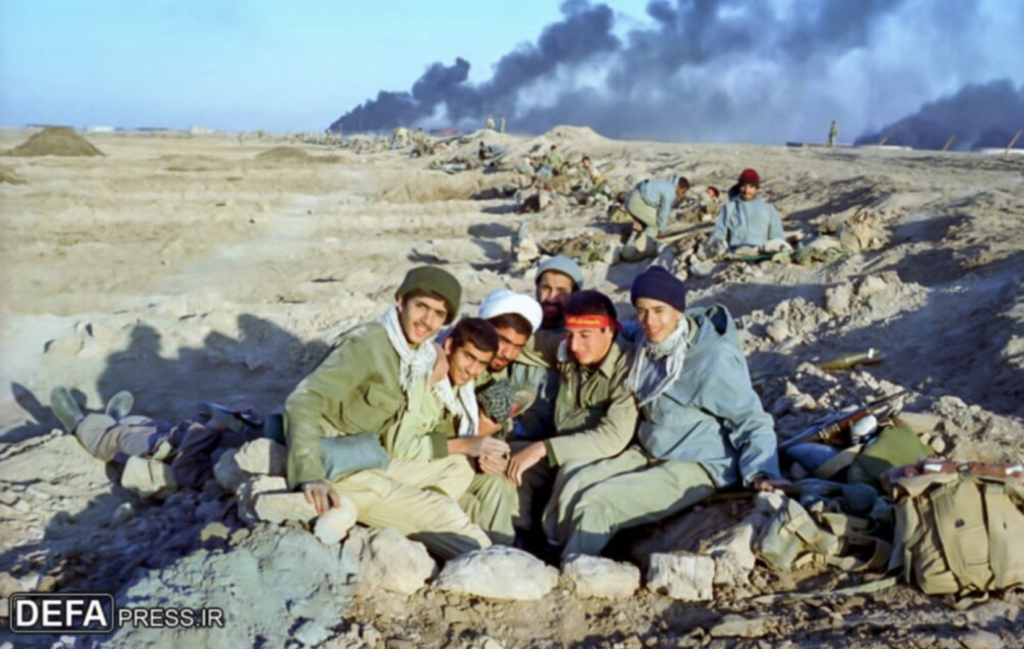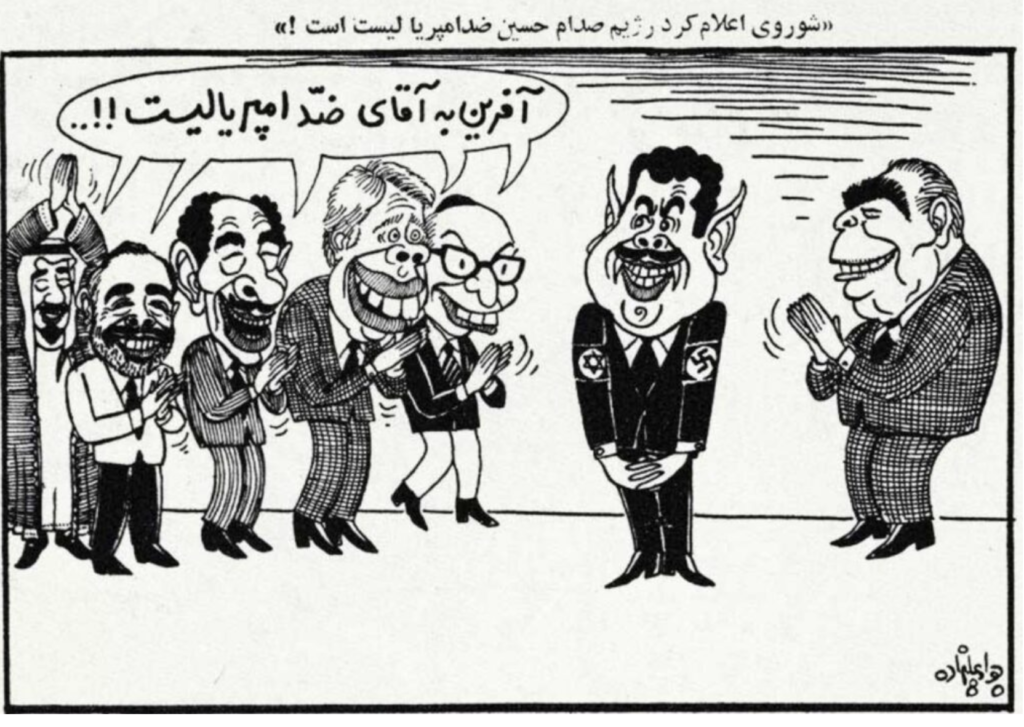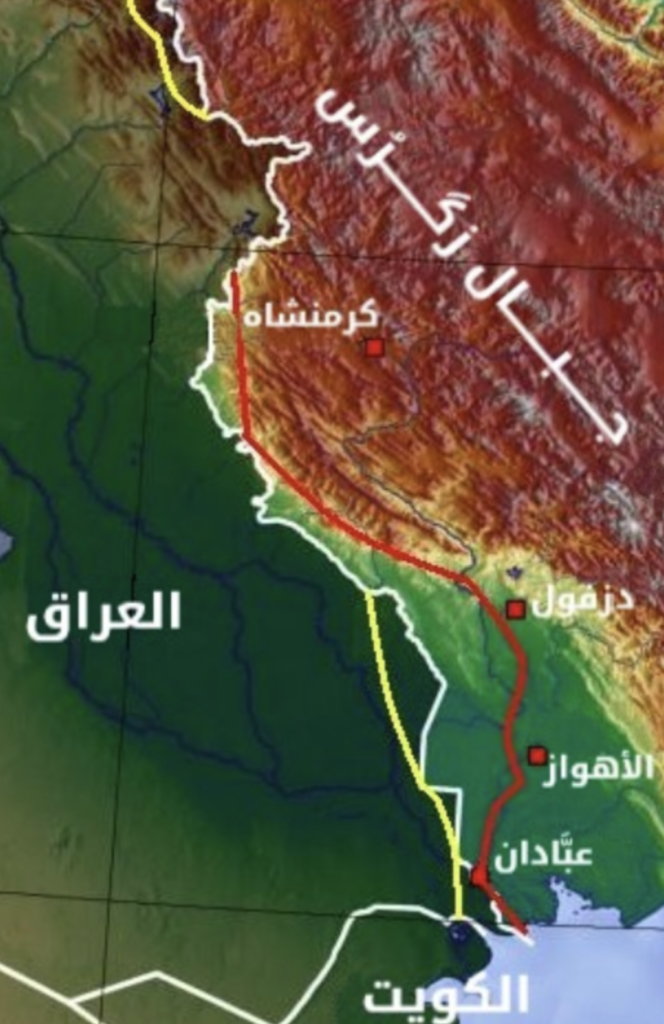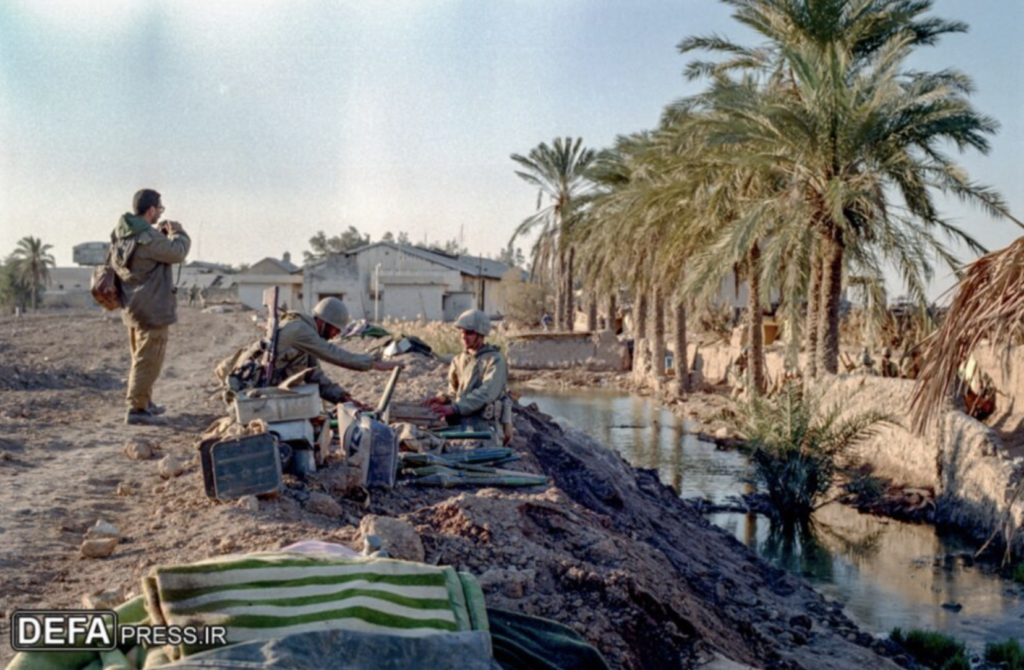All for Nothing: The Iran-Iraq War

By Liam Nagle / Arab America Contributing Writer
While Iraq and Iran might be relatively peaceful neighbors today, this wasn’t always the case. From 1980 to 1988, Iraq under Saddam Hussein and Iran under Ayatollah Ruhollah Khomeini engaged in a terrible struggle for supremacy in the Middle East. Having started out as an Iraqi-invasion of an Iranian province, the conflict quickly turned into one where both states tried to fight for their very existence, resulting in around a million deaths – and very little to show for it. This article will provide a very brief summary of the events that transpired before, during, and directly after the war.
The Prelude

Having just become president of the Iraqi Republic, Saddam Hussein initiated the Ba’ath Party Purge in 1979, helping to solidify his position as head of government and the Ba’ath Party. Next he shifted his focus eastwards to Iran, which was in the throes of the the Iranian Revolution. This saw Shah Mohammad Reza Pahlavi be deposed in favor of Ayatollah Ruhollah Khomeini. In this, Hussein and the Iraqi authorities saw both a risk and an opportunity. Khomeini was espousing revolutionary views, and made it no secret that he wished to export their revolution into the rest of the Arab World.
Hussein attempted to make friendly overtures to new Iranian government, but was firmly rejected when Iran called for an Islamic revolution in Iraq. Such an expansion of the revolution risked Hussein’s position in Iraq – both because Iraq was a secular Ba’athist state, but also because of the fear that Iraq’s Shia populace would align with Shia Iran. The post-revolutionary instability in Iran meant that it was possible for Iraq to invade the oil-rich region of Khuzestan, along Iraq’s southeastern border with Iran.
This wouldn’t be the first time Iran and Iraq sparred over border disagreements, either. Even before the Iranian Revolution, Iraq and Iran had both been a part of the 1975 Algiers Agreement, which sought to rectify several border disputes between the two countries. However, Iraq left the agreement feeling like they had lost out, and therefore had to “right the wrongs” of the agreement. And with Iraq being the second largest military in the Arab world – second only to Egypt – Hussein believed that seizing Khuzestan was possible. Military preparations were finalized, and Iraq’s invasion of Iran began on the 22nd of September 1980.
The Course of the War

The Iraqi invasion immediately ran into problems. Despite the Iranian Revolution severely weakening the Iranian military, Iraq failed to destroy the Iranian air force, resulting in Iranian airstrikes deep in Iraqi territory, even reaching Baghdad itself. The Iraqi ground attacks into the Khuzestan province also stalled, causing the Iraqi military to switch to defense. Seeking an end to the war, Iraq withdrew from all its conquered territories and attempted to start peace negotiations with Iran in 1982.
However, Iran had other ideas. No longer simply seeking to retake the Khuzestan province, Iran proclaimed its new objective of overthrowing the Iraqi Ba’athists under Saddam Hussein and the installation of a new government in Iraq. But like Iraq, Iran wouldn’t be able to achieve these objectives either. With the Iraqi military now defending on its own soil, and many of the Iranian assaults being conducted by lightly-armed volunteers rather than professional soldiers, the war came to stalemate on both sides in 1982. The fighting was defined by trench warfare, with both sides opting to construct trenches along the frontlines, and Iran in particular utilizing lightly-armed “human wave attacks”.
Throughout the course of the war, many countries moved to support the Iraqi side due to the fear of Iranian expansion, including Saudi Arabia, Kuwait, the Soviet Union, and the United States. Iran, meanwhile, was limited to support from Syria and Libya.
A key point of contention with Iraq was its use of chemical weapons against Iranian and civilian targets. In particular, the Anfal campaign of 1988 saw the Iraqi government target the Kurdish populations in northern Iraq, with Iraq seeing the campaign as an extension of the Iran-Iraq War. The killing of as many as 200,000 Kurds during the campaign with both conventional and chemical weapons has since been called a genocide by the Human Rights Watch, although some deny that there were any mass killings of Kurdish civilians at all.
The End of the War

The war began to die down in 1987 and 1988. The military balance began to favor Iraq once again, helped especially by the support from outside states and the development of its chemical weapons program. In 1987, the United Nations adopted a resolution calling for the two countries to accept a ceasefire and to settle border disputes under UN supervision. Iraq agreed to these conditions, but Iran would not unless Iraq paid war reparations. When Iraq began launching several successive attacks into Iran and potentially putting an end to the stalemate, Iran agreed to the resolution and put an end to the war. Estimated killed and wounded during the war range from one to two million. Iraq’s usage of chemical weapons is estimated to have caused around 100,000 casualties, with long-term effects still impacting people today.
Relations between the two states remained hostile for a time. Although they engaged in low-level skirmishes along the border, neither side would go to war against the other. Neither Iraq nor Iran would accept responsibility for the war. After the 2003 invasion of Iraq, relations between the two states improved. The new Iraqi government deposed Saddam Hussein, and in 2005 accepted responsibility for the war. Since then, the war has largely been seen as a waste of human life, with neither side achieving their main objectives. Iraq failed to gain control of Khuzestan, and Iran failed to overthrow the Ba’athist government in Iraq. However, with the current Iraqi government being relatively amiable to the Iranian government, current speculations for war between the two states seems low – at least for now.
Check out our Blog here!









